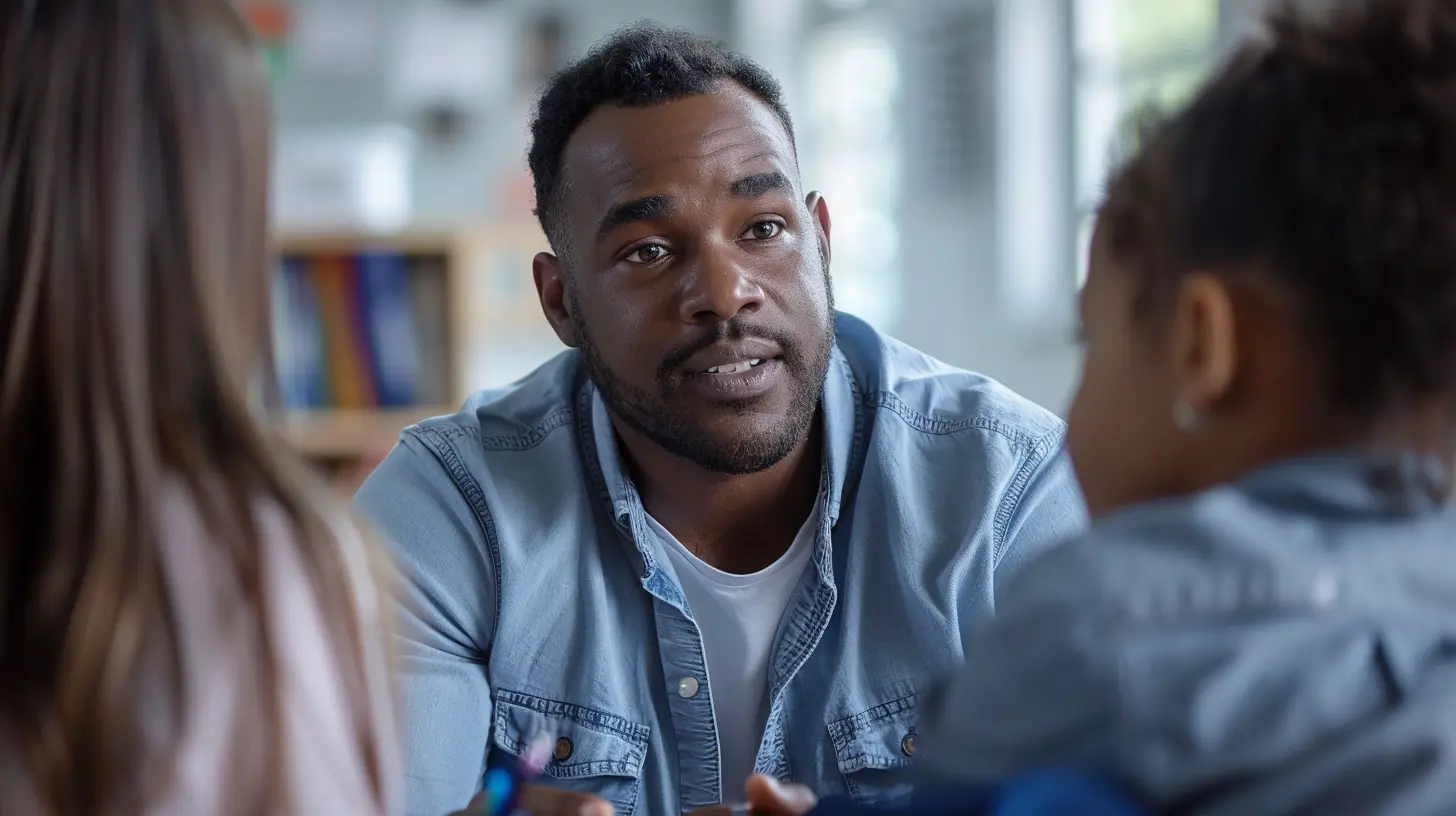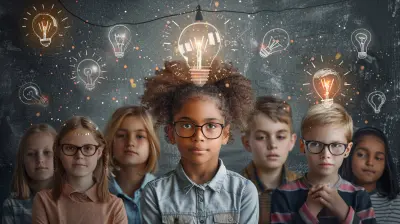Addressing Trauma in the Classroom with SEL Approaches
10 July 2025
Trauma is a silent guest in many classrooms today. It’s not always obvious, but it’s there – lurking behind the eyes of students who have experienced hardship, stress, or emotional pain. As educators, how do we help these students? How do we create a space where they can feel safe, supported, and ready to learn? This is where Social Emotional Learning (SEL) comes into play.
SEL isn't just another education trend. It’s a powerful approach to fostering emotional intelligence, building resilience, and helping students process and heal from their trauma. In this article, we'll dive deep into how trauma affects students and how SEL can be the key to unlocking a healthier, more supportive learning environment.
What is Trauma?
Before we jump into solutions, let’s define the problem. Trauma can take many forms. It might stem from abuse, neglect, loss of a loved one, poverty, or even witnessing violence. There's no one-size-fits-all when it comes to trauma. Each child processes and reacts differently.For some, trauma shows up as anger, aggression, or disruptive behavior. Others might withdraw, becoming quiet or seemingly disinterested. And then, there are those whose trauma flies completely under the radar – they smile, they participate, but inside, they’re struggling.
The Impact of Trauma on Learning
Trauma has a profound effect on a child’s brain. When a student feels unsafe or anxious, their brain goes into survival mode, often referred to as the "fight, flight, or freeze" response. This essentially shuts down the parts of their brain responsible for higher-order thinking, like problem-solving, memory, and attention – all things that are pretty important when it comes to learning, right?It’s like trying to do your homework while standing in the middle of a thunderstorm. Your brain is too focused on surviving the storm to concentrate on the math problems in front of you.
So, how can we help students navigate the storm?
The Role of SEL in Addressing Trauma
Social Emotional Learning (SEL) is all about helping students develop the skills to manage their emotions, build healthy relationships, and make responsible decisions. It’s the emotional toolkit that every student needs, but it’s especially crucial for those who have experienced trauma.Building Emotional Awareness
One of the core components of SEL is emotional awareness – recognizing and understanding one’s emotions. For students who have experienced trauma, their emotions can often feel overwhelming or confusing. They might not even realize they’re angry or anxious until it’s too late and they’re lashing out or shutting down.SEL teaches students to identify their emotions early on and gives them strategies for managing those feelings. It’s like giving them a map to navigate their emotional landscape, instead of leaving them lost in the fog.
For example, a student might learn to recognize the physical signs of anxiety – a racing heart or sweaty palms – and use techniques like deep breathing or mindfulness to calm themselves down before the anxiety spirals out of control.
Creating a Safe and Supportive Environment
A cornerstone of SEL is creating a safe and supportive classroom environment. This is especially important for students who have experienced trauma, as they often struggle with feelings of safety and trust. If a student doesn’t feel safe in the classroom, they’re not going to be able to learn effectively.Through SEL, teachers can create a classroom culture where students feel valued, respected, and cared for. This might involve setting clear expectations for behavior, fostering open communication, or simply making time for students to talk about their feelings.
When students feel safe, they’re more likely to take risks, ask questions, and engage in the learning process. It’s like planting a seed in fertile soil – when the conditions are right, growth happens naturally.
Implementing SEL Approaches in the Classroom
So, how can teachers integrate SEL approaches to address trauma in the classroom? Let’s look at some practical strategies.1. Start with Morning Check-ins
One of the simplest ways to incorporate SEL into your classroom is by starting each day with a morning check-in. This can be as simple as asking students how they’re feeling or having them rate their mood on a scale of 1 to 5.This daily practice not only helps students become more aware of their emotions, but it also gives teachers valuable insight into how their students are doing. If a student is consistently coming in with a low mood, that might be a sign that something deeper is going on, and the teacher can step in to offer support.
2. Teach Emotional Regulation Techniques
Teaching students techniques to manage their emotions is a key part of SEL. This can include things like deep breathing exercises, progressive muscle relaxation, or mindfulness practices. These techniques give students a way to calm down when they’re feeling overwhelmed, which is especially important for those who have experienced trauma.Consider setting aside a few minutes each day to practice these techniques as a class. Over time, students will start using them on their own when they need to regulate their emotions.
3. Foster a Growth Mindset
Trauma can make students feel powerless and stuck. They might believe that their circumstances define them or that they’ll never be able to succeed. By fostering a growth mindset in the classroom, teachers can help students shift their thinking from “I can’t” to “I can.”A growth mindset encourages students to see challenges as opportunities for growth, rather than as failures. It’s about helping them understand that their abilities aren’t fixed – they can improve and succeed with effort and perseverance.
For trauma-affected students, this shift in mindset can be incredibly empowering. It’s like giving them the keys to their own success.
4. Build Strong Relationships
Relationships are at the heart of SEL. For students who have experienced trauma, building strong, trusting relationships with their teachers and peers can be a game-changer. These relationships provide a sense of safety and belonging, which is essential for healing and learning.Teachers can foster these relationships by making time for one-on-one conversations with students, showing empathy and understanding, and creating opportunities for students to work together and support each other.
SEL as a Tool for Long-Term Healing
While SEL can certainly help students manage their emotions in the short term, it’s also a powerful tool for long-term healing. Trauma doesn’t go away overnight, but with the right support, students can learn to process their experiences, build resilience, and move forward.Through SEL, students can develop the emotional skills they need to not only survive but thrive. They learn how to cope with difficult emotions, how to build healthy relationships, and how to make positive decisions – skills that will serve them not just in the classroom, but for the rest of their lives.
It’s like giving students a toolkit for life. They might not use every tool right away, but when the time comes, they’ll know how to reach for the right one.
The Role of Teachers in SEL
Teachers play a vital role in implementing SEL and supporting students through trauma. But this doesn’t mean they need to be therapists. Instead, it’s about creating a space where students feel seen, heard, and supported. It’s about teaching emotional skills in the same way you’d teach math or reading.And let’s be real – it’s not always easy. Addressing trauma in the classroom can be challenging and emotionally draining. But the impact you can have on a student’s life is immeasurable. You might not always see the results immediately, but rest assured, your efforts are planting seeds of healing and growth.
Conclusion
Trauma in the classroom is real, and it’s affecting students’ ability to learn and thrive. But through SEL approaches, we can create a classroom environment where students feel safe, supported, and equipped to manage their emotions. By building emotional awareness, teaching regulation techniques, fostering a growth mindset, and building strong relationships, teachers can help students navigate their trauma and develop the skills they need to succeed.At the end of the day, SEL isn’t just about learning how to control emotions – it’s about creating a foundation for lifelong emotional well-being. And that’s something every student deserves.
all images in this post were generated using AI tools
Category:
Social Emotional LearningAuthor:

Olivia Lewis
Discussion
rate this article
1 comments
Miranda McVaney
This article provides valuable insights on integrating SEL approaches to support students facing trauma. Practical strategies shared can truly empower educators to create a nurturing classroom environment.
July 23, 2025 at 12:03 PM

Olivia Lewis
Thank you for your thoughtful feedback! I'm glad you found the insights and strategies helpful for supporting students and fostering a nurturing environment.


